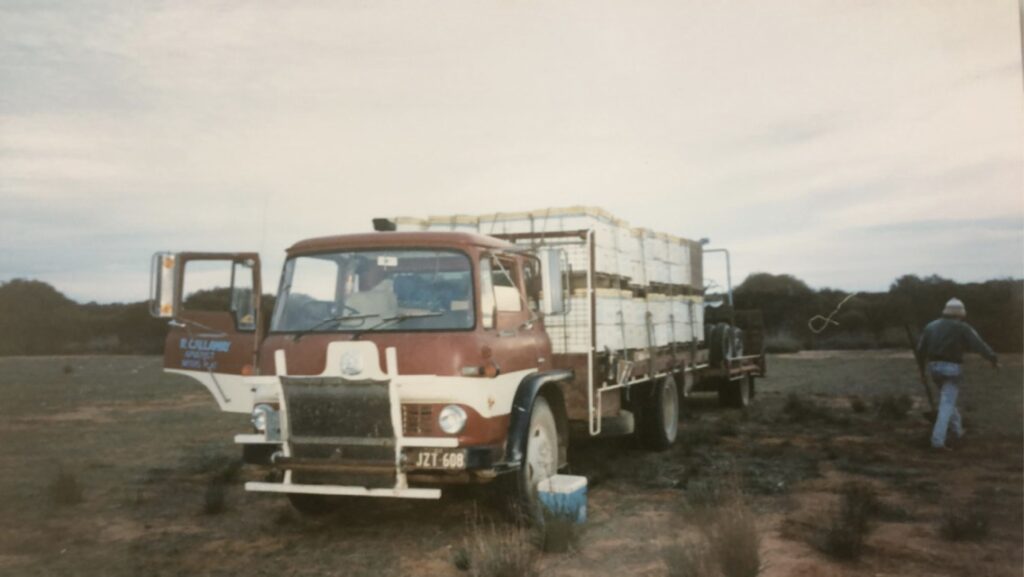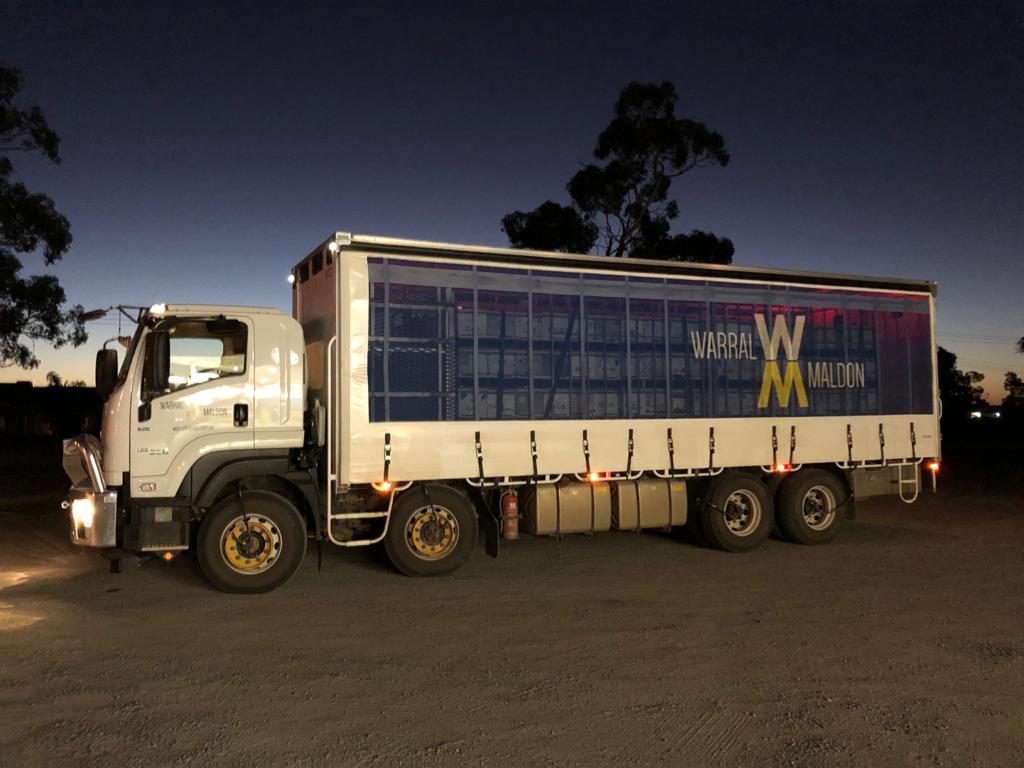They say there’s no need to reinvent the wheel, but since 2004 Lindsay Callaway knew this wasn’t the case with the old way beekeepers transported their hives. As they did back then and still continue to do, most beekeepers use tray tops with an open entrance to move their bees – a way he felt was in dire need of a reinvention.
For large scale commercial operations like ours which need the quantity and variety of honey, shifting bees means chasing the best flows in the remote wilderness, which also means long hours on the road. Keeping our bees happy and healthy during these trips ends up being one of the most important things we do as Apiarists.
Transporting bees is harder than it sounds; there’s a lot more to it than simply hauling them on a truck and driving off into the sunset. It’s a stressful time for them (and can be for us, too!), as they orient themselves by where the hive is and it takes some time for them to get used to their new location.
When on the move, they need a myriad of conditions that are tough to all get right on a rigid truck; including sufficient airflow and ventilation so they don’t overheat, and quite a small temperature range they’re happy with (also so they don’t overheat) – this is a huge risk as it gets very dangerous for bees very quickly is they’re too hot. If you can’t manage keeping temperatures relatively mild, for example if you need to move them around in the middle of summer during peak honey season, then it gets a good deal more complicated.
They also need to be kept relatively moist, which as you can imagine is also not conducive to long, dry, windy road trips, as well as secure (both the hives in the truck itself and the frames within the hives), level (especially when full of honey) and the big moves can only start either very early in the morning or after sunset otherwise you’ll leave your forager bees behind.
And not to forget that safety and efficiency for our beekeepers is vital as well; when shifting bees our days are often long, and that without spending unnecessary time loading them in and out when there are better ways.
So, all in all, a very simple process!

To rise to these challenges, Warral Maldon’s innovative custom mesh curtains and pallets in our trucks make our lives as beekeepers and those of our bees much easier. There have been many iterations since Lindsay started working on the concept nearly 20 years ago, including a thermo king refrigerated curtainsider, front and back vents as well as a water pump and mist sprays. But it’s the latest installation that has been consistent so far in improving conditions for the beehives, safety for the public and maximising beekeeping efficiency.
The custom mesh curtains ideated and designed by Lindsay allows the bees to breathe easily during our long trips, in a space that can be air conditioned and fully insulated. The hives are also easily wetted down from the cab with a built in water pump and mist spray system, while the custom pallets holding the standard hives lock into the truck tray, making loading and removing them simple and more efficient for our beekeepers. It allows some daytime shifting of bees when they’re most active, and is fantastic for delivering extracted hive board combs (also fondly called ‘stickies’) because they stop non-Warral bees getting into our hives, which can be a serious disease hazard. They’re returned to our factory to be extracted, filtered and poured into jars – and of course, we had to adorn them with our new logo as well!
The apiary industry is also keen to know more, with Lindsay invited to present on this innovation at the Australasian Honeybee Conference in Perth later this year.
He’s also more than happy to share details with the wider beekeeping community so if you’d like to know more, including replicating the design in your own trucks, please don’t hesitate to get in touch.












